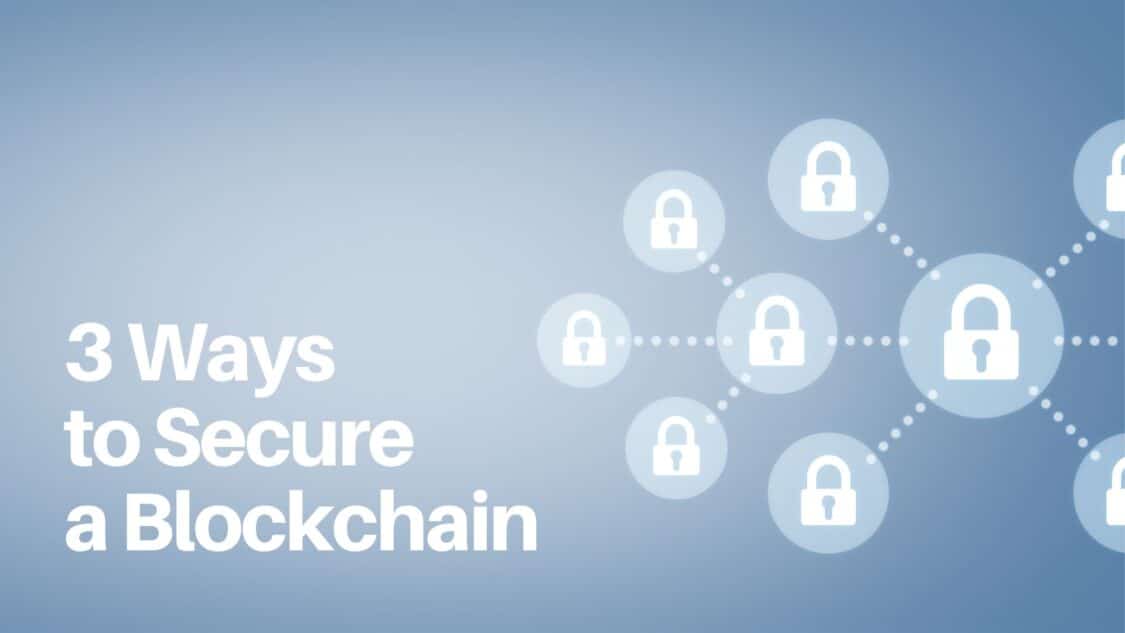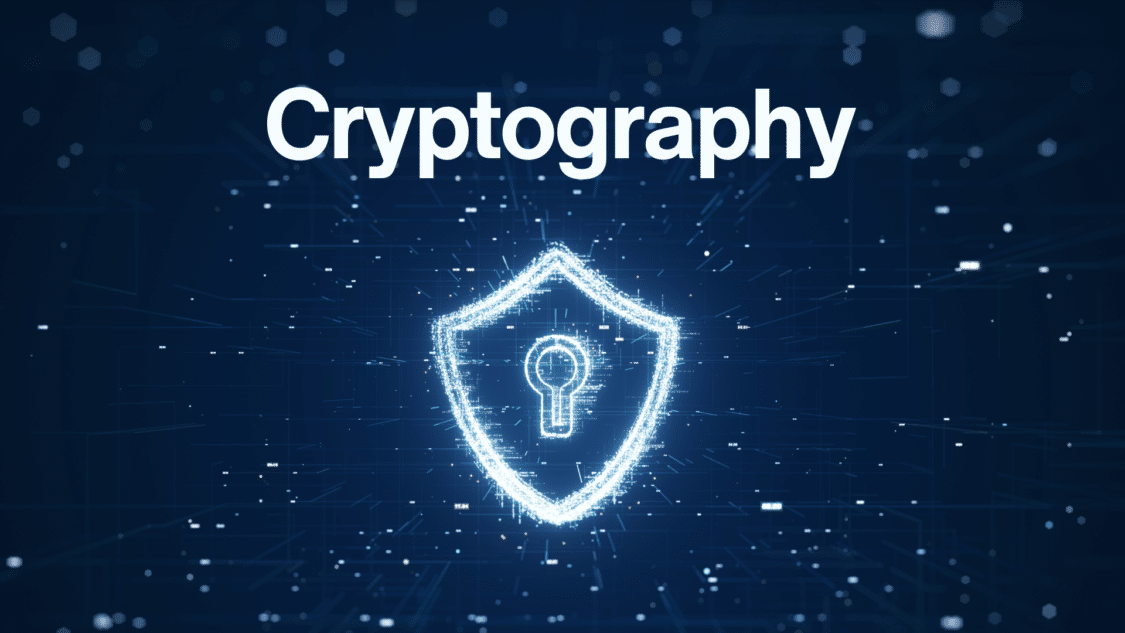There are various ways to secure a blockchain – cryptographic techniques and mathematical models of behaviour and decision-making. The idea of a blockchain is to keep assets away from duplication or, even more so, destruction. Blockchain is under most cryptocurrency exchanges and is essentially how we can rely on our digital assets to be safe.
Blockchain’s uses extend beyond cryptocurrency, such as tracking charity donations, for example, or supply management and medical databases. As simple as blockchain may sound, it is a rather tricky concept. To understand how blockchain security protects these cutting-edge systems, it is crucial to have a thorough understanding of its fundamentals.

Immutability and Consensus – Secure a Blockchain
First, we have immutability and consensus, two of the essential concepts of a secured blockchain system. Immutability refers to blockchains’ ability to restrict changes to already validated transactions. Transaction data usually relates to cryptocurrency and digital assets; however, there are records of transactions of non-monetary forms of digital data. This is accomplished by linking blocks together and cryptographically hashing the data, making it computationally impossible to change previous information without it being detected.
Consensus concerns the nodes agreeing on the blockchain network’s state and the transactions’ validity. This process of consensus depends on consensus algorithms. These algorithms enable participants, known as validators or miners, to agree on the validity and order of transactions. Examples of popular consensus algorithms include Proof of Work (PoW) and Proof of Stake (PoS), among others. These algorithms require validators to solve complicated mathematical problems or hold a certain amount of cryptocurrency as collateral to validate and add new blocks to the chain. Blockchain technology creates a safe and open platform for recording and verifying transactions through consensus and immutability, making it resistant to fraud and unauthorized changes.

These two concepts combined are what secure a blockchain. The consensus algorithm essentially ensures the blockchain rules are going according to the rules. It also checks that all parties using the blockchain agree on the system functionality and state of the network. When a new block of data is verified, immutability maintains the integrity of the data and transaction records.
Cryptography – Secure a Blockchain
Cryptography is what secures blockchain network data. This is where hashing becomes essential. An algorithm receives data of any size and produces an output (a hash) with a fixed size or length during the hashing process. The output will always be hand in hand with the input, meaning the output will always stay the same length. However, if the input changes, the output will also change. It doesn’t matter how often the hash function is run; the output hash will always be the same if the input stays the same.
Within blockchain technology, these hashes are identifiers for data blocks. Each block’s hash is in connection to the previous block’s hash, resulting in a chain of connected blocks. Any changes that are done affect the block hash. Therefore, each block hash depends on the data within the block. As a result, the hash of each block is computed using both the data inside that block and the preceding block’s hash. These hash identifiers are critical to blockchain security and immutability.

Cryptography, in addition to securing transaction records on ledgers, plays a role in maintaining the security of wallets used to hold cryptocurrencies. A private key creates a digital signature for a transaction, proving ownership of the coins. The nature of asymmetric cryptography prevents anybody other than the private key holder from accessing the cryptocurrency wallet. In this way, those assets are secure on the blockchain until the owner chooses to spend them.
Crypto Economics – Secure a Blockchain
Crypto economics is a new concept that helps to secure a blockchain. It is a study related to game theory. Game theory is a mathematical tool for decision-making. While it may relate to various situations, crypto-economics studies characterize nodes’ activity on distributed blockchain networks.
The integration of economic principles within blockchain technology, called crypto-economics, plays a crucial role in safeguarding the integrity of blockchain systems. Crypto economics is essential in maintaining the authenticity of blockchain technology by incorporating economic principles. Economic benefits and drawbacks resulting from actions within a blockchain ecosystem drive users to consider the network’s interests first.
A key aspect of crypto-economics is the native tokens and cryptocurrencies within the blockchain network. These tokens serve many benefits. For one, they are a means of exchange within the network; additionally, they drive investors to contribute their resources, such as computing power or storage, for the benefit and security of the blockchain. Furthermore, tokenomics can be structured to encourage the circulation and flow of tokens to promote decentralization and drive away risky behaviour. An efficient crypto-economic system can enhance blockchain networks’ security levels since the participants are motivated to adhere to the preset standards and protect the network’s credibility.
How does blockchain technology ensure data integrity and security?
Blockchain technology ensures data integrity and security through cryptographic techniques and decentralized consensus mechanisms. Every block in the blockchain is digitally fingerprinted through a unique cryptographic hash, making it nearly impossible to edit or add data without detection. The blockchain works under a decentralized network of nodes, where multiple participants independently verify transactions, eliminating the need for a central authority. By utilizing Proof of Work or Proof of Stake algorithms, the blockchain only accepts legitimate transactions, thereby preserving the credibility and reliability of its data.
Furthermore, a secured blockchain system enables transparency through a public ledger. It uses encryption and digital signatures to safeguard transactions, allowing for secure, tamper-resistant, and transparent data storage and movement. These characteristics make blockchain valuable for many applications requiring data trust, security, and immutability.
What are some potential risks associated with blockchain technology or securing a blockchain?
Blockchain technology and securing a blockchain come with certain risks that must be considered. Security vulnerabilities, such as those presented by smart contract bugs and weak encryption, can be leveraged by malicious individuals for their advantage. Regulatory and legal impediments, scalability limitations, governance intricacies, privacy apprehensions, and disparities in interoperability are potential risks.
Robust security measures, extensive testing of smart contracts, adherence to regulatory compliance, scalability solutions, effective governance models, privacy-enhancing strategies, and efforts toward interoperability and standardization are critical to avoiding these pitfalls. By recognizing and resolving these risks, the potential of blockchain technology will become a reality while limiting vulnerabilities and ensuring the blockchain ecosystem’s trust and integrity.
What is the role of consensus mechanisms in ensuring blockchain security?
Consensus mechanisms in the blockchain network are important in keeping the network secure. They function as guidelines that assist all network members in reaching a consensus on which transactions are legitimate and which ones are not. For transparency and credibility, the blockchain prohibits any dishonest or unethical actions from being included in its processes.
Other mechanisms, like Proof of Work and Proof of Stake, use different methods. They set up measures that prevent cheating or tampering with the system, thus ensuring the blockchain remains secure and reliable for all parties involved. In simpler terms, consensus mechanisms guarantee the security of the blockchain by preventing malicious individuals from tampering with it, thereby establishing reliability in the recorded transactions.
Conclusion
In conclusion, authorizing strong security measures is essential to secure a blockchain and maintain the network’s trust, integrity, and stability. Immutability and consensus mechanisms build the foundation of security by preventing unauthorized changes and enabling user agreement. Crypto-economics principles enhance a blockchain’s security by ensuring that economic benefits correspond with intended actions. By employing native tokens, rewards and well-designed token economics, individuals are encouraged to prioritize the well-being of the network, resulting in improved security measures.
Blockchain developers, users, and stakeholders must prioritize strong security measures to prevent threats to protect the blockchain ecosystem. By embracing these security measures, blockchain technology may reach its potential as a reliable and secure infrastructure for decentralized apps, financial transactions, and various other use cases.
For more news updates, visit our homepage now and see our latest news article. Want to learn more about trading? Visit our education page now and learn for FREE!

